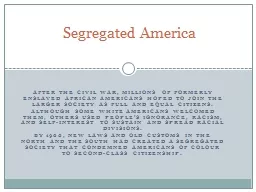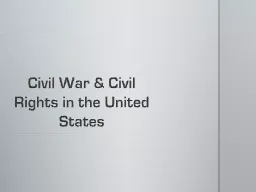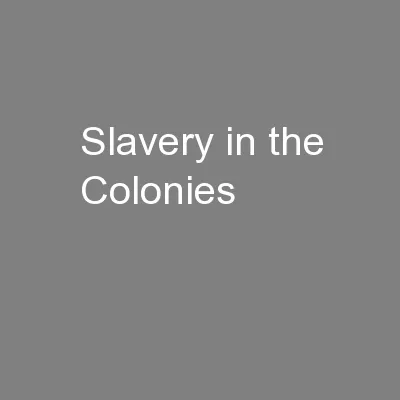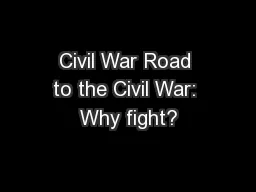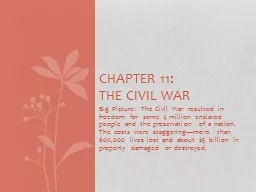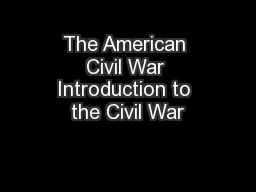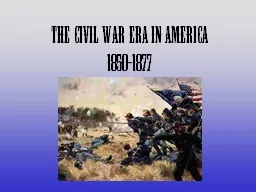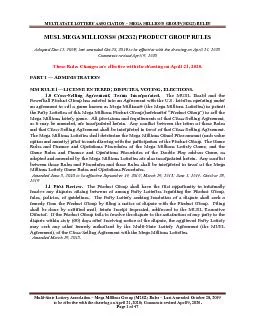PPT-After the Civil War, millions of formerly enslaved Africa
Author : pasty-toler | Published Date : 2016-07-10
Although some white Americans welcomed them others used peoples ignorance racism and selfinterest to sustain and spread racial divisions By 1900 new laws and old
Presentation Embed Code
Download Presentation
Download Presentation The PPT/PDF document "After the Civil War, millions of formerl..." is the property of its rightful owner. Permission is granted to download and print the materials on this website for personal, non-commercial use only, and to display it on your personal computer provided you do not modify the materials and that you retain all copyright notices contained in the materials. By downloading content from our website, you accept the terms of this agreement.
After the Civil War, millions of formerly enslaved Africa: Transcript
Download Rules Of Document
"After the Civil War, millions of formerly enslaved Africa"The content belongs to its owner. You may download and print it for personal use, without modification, and keep all copyright notices. By downloading, you agree to these terms.
Related Documents

